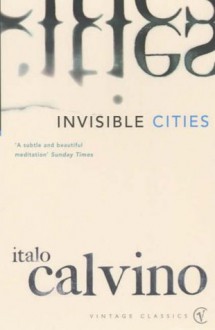

May 2019 Bookclub read
Once upon a time, there was a guy called Macro Polo, and he invented a very cool pool game.
Yeah, I know. But he did talk to Kublai Khan about cities.
Or was it one city? Or women?
Calvino’s book isn’t so much a story but a mediation. The question is what he is mediating on. Is it simply how a city can be so many things? Any city can be. Each neighborhood of a city is like a minor city. The rhythm of city differs not only from events – Philly celebrating the Super Bowl win is different than the Mummers which is different than Taps in the Park.
Of course, you could say that people are cities too. All our cells, organs, and what not. Our veins and arteries are the freeways.
Then, are the cities also women? Does Polo see the city as a city of women because he had a wife and three daughters? Or because there was a woman in every district for him?
Every city in this book is contains a woman’s name, and the names can be seen as symbolic, whether or not they are supposing to be symbols, well its’ Calvino. So, anything goes.
The small descriptive pieces transcend space and time. There are doubled cities. Cities above and below. It is impossible not to think of the City and the City when reading this. Mielville’s later novel deals with class and crime, something that haunts Calvino’s work but is not dealt with in the same way.
The strange thing is that thinking of Calvino’s work which also seems to refer to the death of cities, and that is prophetic considering the effect of climate change on some cities, including Polo and Calvino’s Venice.

“For those who pass it without entering, the city is one thing; it is another for those who are trapped by it and never leave. There is the city where you arrive for the first time; and there is another city which you leave never to return. Each deserves a different name; perhaps I have already spoken of Irene under other names; perhaps I have spoken only of Irene.”
― Italo Calvino, Invisible Cities
My memory of this book a month after finishing it is almost like a memory of a particularly good guided meditation (OK, I don't have a ton of experience with good guided meditation, but I know bad ones!) This is a nifty book. It seems so simple: Marco Polo telling tales to Kublai Khan about his travels through the Mongol Empire, with some notable additions. So there's a realm where it's a bit like a travelogue to all the cities I've visited, lived in, loved or have wished to see ― a wonderful imaginative experience. And there's another realm where it's philosophy about cities, humankind, differences and similarities, the changes that happen over time both physically and mentally ― and this is the part where the meditation comes in. It's a terrific book that I wasn't sure I wanted to read before I started. It starts slowly, but once you start to see what's happening between the two main characters and the world in which we all live, it starts to seem almost too short.
It also made me very curious about a lot of things and one of the best things I found along the way was a course curriculum for school students based on Invisible Cities found here and the Yale National Initiative seminar "Invisible Cities: The Arts and Renewable Community."
Those are just two things I thought were kind of awesome, but there are other nonfiction books and all sorts of memory/artistic and other creative projects that tie into this book. You could spend a lifetime doing nothing but reading related texts. Italo Calvino's Invisible Cities is an incredibly imaginative springboard to seeing our world using our fullest imagination.